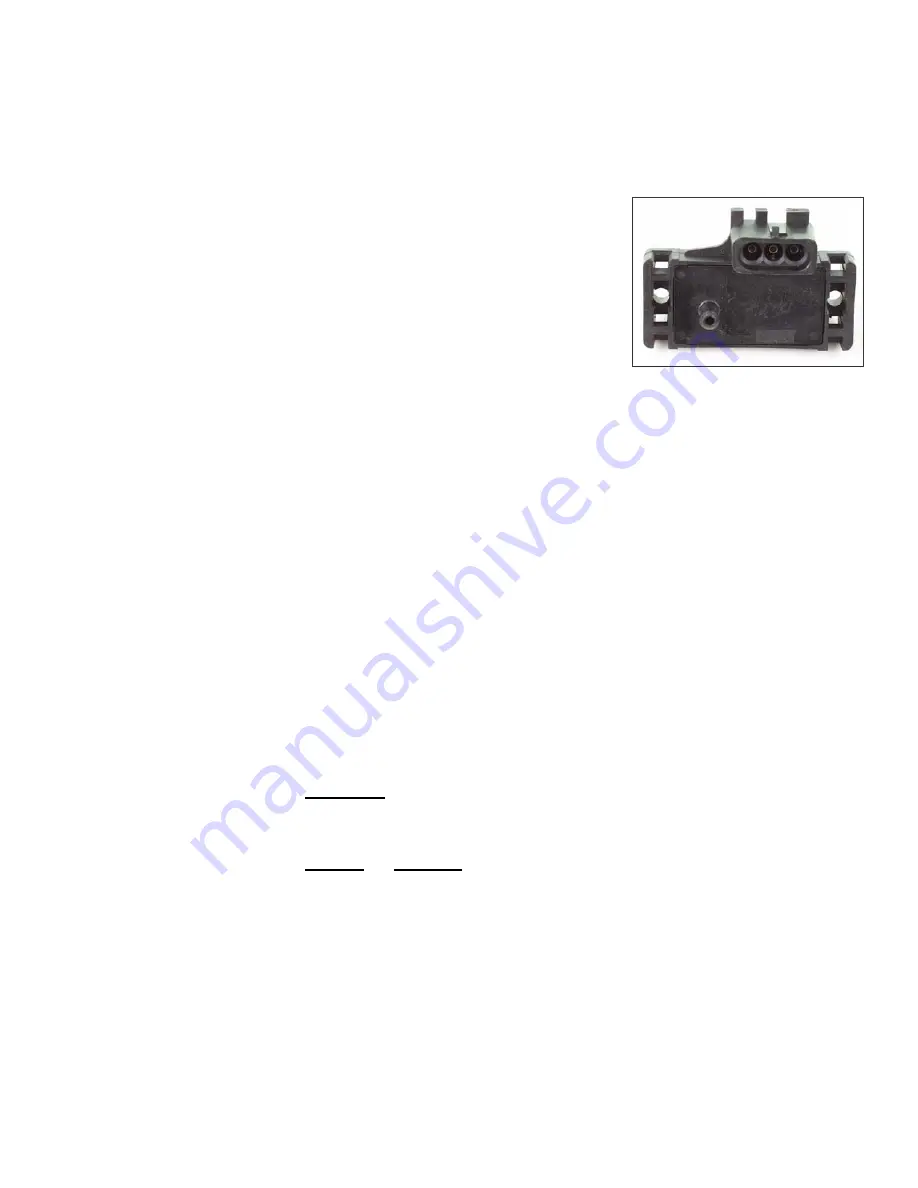
G. TECgt Input Functions and Wiring
G.1. The Manifold Air Pressure (MAP) Sensor
C B A
The MAP sensor determines the operating load of the engine. To
do so, it measures the intake manifold absolute pressure. Since the intake
manifold pressure has a direct effect on the amount of air that the
cylinders can ingest, the use of a MAP sensor as a load-determining
device is well justified.
MAP sensors are available from Electromotive in three varieties:
1-, 2-, and 3-Bar. A 1-Bar sensor would be used on a naturally aspirated
engine, a 2-Bar sensor would be used on a boosted engine (up to 15psi),
and a 3-Bar sensor would be used on a boosted engine (up to 30psi).
The output of a MAP sensor is a 0 to +5 Volt signal. When the intake manifold pressure is low
(high vacuum), the sensor reading is low (approaching 0 Volts). This would occur during part-throttle
cruising or decelerating (engine braking). When the intake manifold pressure is high (low vacuum), the
sensor reading is high (appro5 Volts). This would occur during full throttle operation.
Absolute vs. Gauge Pressure…
A MAP sensor is an absolute sensor. This means that its readings are referenced to a full vacuum.
As such, the lowest reading attainable on a MAP sensor would be a full vacuum. (In practice, however,
most MAP sensors only go down to about 10kPa.)
Gauge pressure is referenced to ambient atmospheric pressure. When we say that an engine is
running 15psi (103kPa) of boost, it means that the intake manifold is seeing 15psi of positive pressure.
Since standard atmospheric pressure is approximately 14.7psi (101.3kPa), the absolute manifold pressure
for this engine would be 29.7psi (205kPa or about 2 Bar). Thus, a 2-Bar sensor is necessary for this engine.
Refer to the formula below if you are confused about the difference between gauge and absolute pressure.
Ambient (atmospheric) Pr Gauge Pressure = Absolute Pressure
•
When discussing absolute pressure, there is no distinction made between
vacuum and pressure.
•
When discussing gauge or relative pressure, vacuum readings will be
negative values and boost readings will be positive. Alternatively, in the US
measurement system, vacuum readings can be expressed in inches of
Mercury and boost can be expressed in pounds per square inch.
Units of Measurement
In the US, units of vacuum are typically measured in inches of mercury (in-Hg). Units of pressure
are typically measured in pounds per square inch (psi). Since there is a distinction made between vacuum
and pressure readings, these units are generally not used for absolute measurements.
______________________________________________________________________________________
TECgt Manual Version 2.0
- Page 84 -
©2008 Electromotive, Inc.
In most other countries, the metric system in used for pressure measurements. In this system, the
kilopascal (kPa) is the standard unit of measurement. The distinction must be made to whether the






























